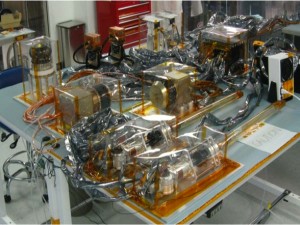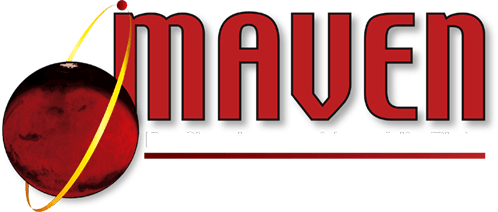
The MAVEN spacecraft continues to perform well on its trip to Mars. The spacecraft is currently flying in “late cruise mode,” which positions the spacecraft with the fixed high gain antenna pointing directly at Earth as MAVEN gets farther from our home planet. The high gain antenna enables us to communicate with MAVEN at a high data rate between Mars and Earth.
During the month of March, the MAVEN team calibrated various spacecraft systems including the high gain antenna, star trackers, and the inertial measurement units in order to verify pointing accuracies.
On the instrument side, the team tested the Extreme UltraViolet (EUV) sensor by slewing the spacecraft in a cross-shaped scan maneuver while the EUV sensor stared at the Sun. Once at Mars, this sensor will measure the extreme ultraviolet light coming from the Sun and help us to better understand solar effects on Mars’ upper atmosphere. We also turned on the entire Particles & Fields package (six of the eight MAVEN instruments), now working together for the first time in space.
The team has been hard at work preparing for Mars Orbit Insertion—on track for September 21st at 10:00 p.m. EDT—by scheduling team dress rehearsals and testing the spacecraft in flight and on the ground with simulators.
As of March 27, 2014, MAVEN is 30.5 million kilometers (18.9 million mi) from Earth and 71.9 million kilometers (44.7 million mi) from Mars. Its velocity is 27.34 kilometers per second (17 mi/sec) as it moves around the Sun.
[addthis]

